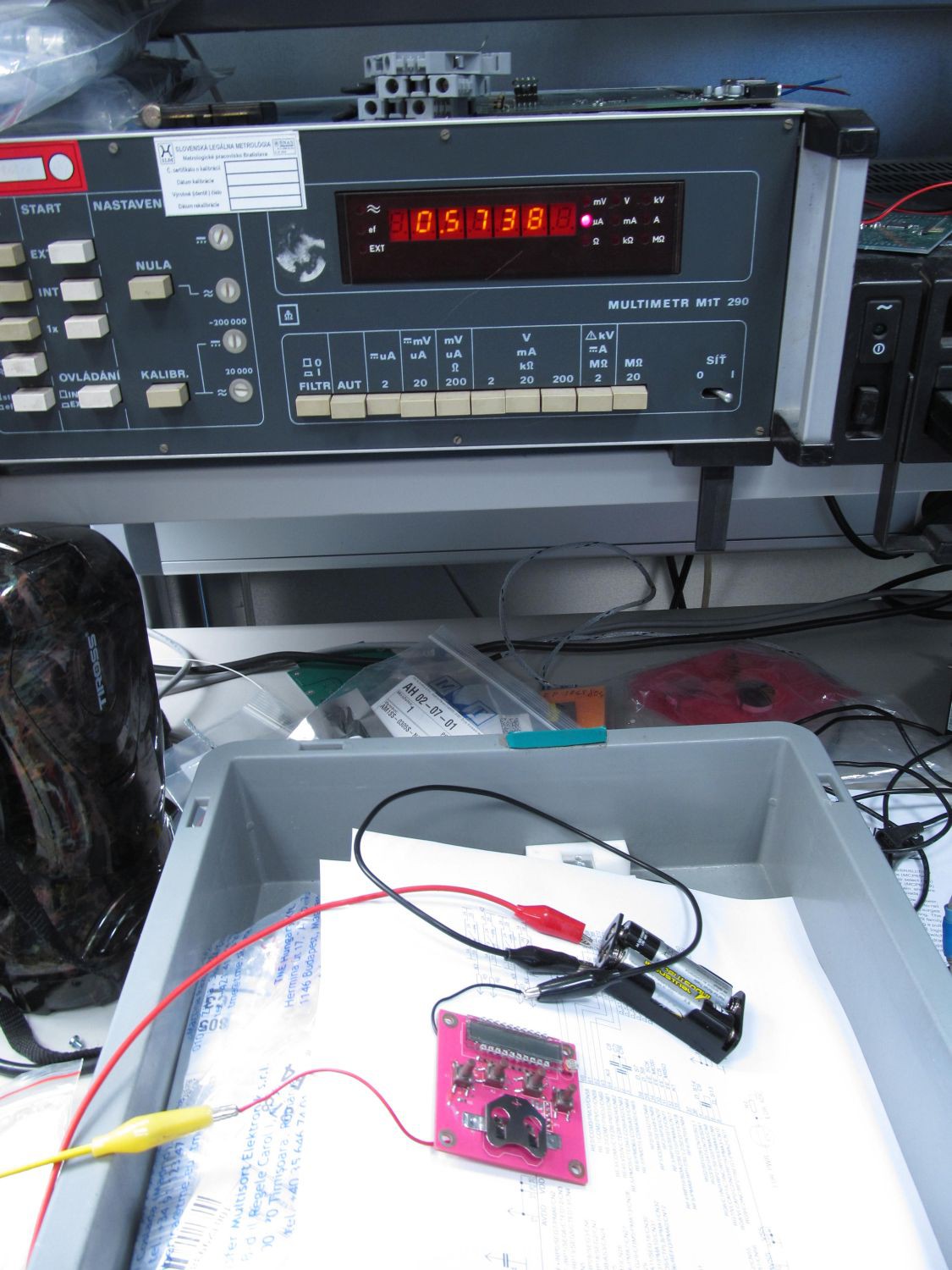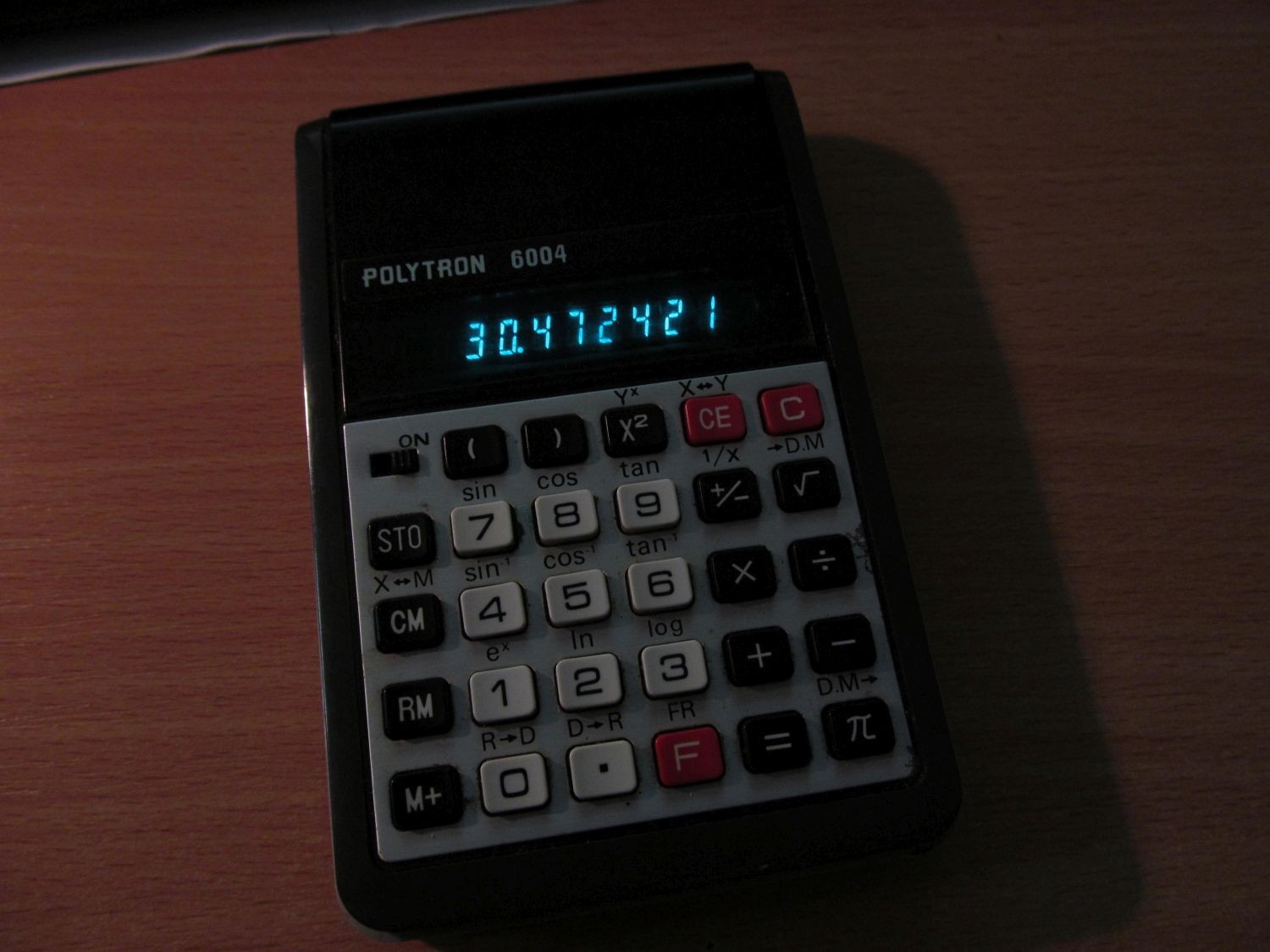LLG was built with lowest possible current consumption in mind right from its inception, see my one of my previous project logs. I expected 2,5uA with LCD on, 0,7uA with LCD off; and 9 or 23 years battery life. Let's check it against reality.
Device works in three modes
- High-power mode, when ADC acquisition and calculations do take place. In this mode LLG takes approximately 400uA
- Mid-power mode, when LLG is brought out of sleep and interacts with user; scanning buttons, refreshing LCD. This takes approximately 25uA and after a few seconds falls to low-power mode.
- Low power mode, when LLG is idle and waits for user interaction or RTC to wake up and take measurement. In this mode, LLG takes 2,55uA with LCD on or 570nA with LCD off.
When I took video in previous project log, the 2,55uA and 25uA figures are obvious, but at the time I didn't have LCD-off mode yet. In order to measure it more precisely I had to use some older, heavy stuff

The logger spend different time in those power managed modes. Vast majority of time is spend in low-power modes. Let's say user spends one minute per day checking the LLG results - that is mid-power mode. High power modes are ran automatically - 1440 times per day for light measurements (each one takes less than 5ms) and once per day to analyze the data, calculate geographical location and save one log into EEPROM (that takes roughly 150ms).
It draws 60uAs (microampere-seconds) in high calculations, 3,24mAs in measurement mode, 1,5mAs in mid-power mode and 220mAs per day in low-power mode with LCD on. That is roughly 225mAs per day or 22,8mAh of capacity consumed by the logger. Self discharge is usually defined as 1% per year - leaving us with a bit of doubt what it does mean, as @Ted Yapo discusses here, but if I assume it's 1% of nominal 240mAh capacity, that adds another 2,4mAh of capacity per year, giving total 25,2mAh per year. This yields to 9,5 years of lifetime on average usage and LCD on.
With LCD off the idle-mode figure goes roughly five times lower, in total 54mAs per day, or 5,48mAh per year, plus 2,4mAh self-discharge, that is 7,88mAh per year. Given the same capacity, runtime could be 30,5 years for one CR2032.
 Keep in mind those are projected numbers, especially the 30 years figure has to be taken with grain of salt, as anything over a few years. I've seen and heard of many stories where CR2032 powered BIOS backup for 15 years and then ran just like new, but battery is just chemical component and as everything other it's only so much tolerable to manufacturing variances, temperature changes, humidity... etc. The same applies to the LLG itself. MCU sleep current is somehow temperature dependent. PCB - especially at places where solder flux wasn't perfectly washed out - can absorb some humidity, bringing the consumption higher.
Keep in mind those are projected numbers, especially the 30 years figure has to be taken with grain of salt, as anything over a few years. I've seen and heard of many stories where CR2032 powered BIOS backup for 15 years and then ran just like new, but battery is just chemical component and as everything other it's only so much tolerable to manufacturing variances, temperature changes, humidity... etc. The same applies to the LLG itself. MCU sleep current is somehow temperature dependent. PCB - especially at places where solder flux wasn't perfectly washed out - can absorb some humidity, bringing the consumption higher.The onboard 25AA256 EEPROM can hold 32768B data. One log is 4B long, that is 8192 records (8191, actually, because of the way it's organized). Considering one record per day, EEPROM should be filled in 22,4 years. LLG has no option to disable logging, as I considered it unnecessary.
 jaromir.sukuba
jaromir.sukuba
Discussions
Become a Hackaday.io Member
Create an account to leave a comment. Already have an account? Log In.
As per Energizer, the 1% figure is of the fresh capacity. http://data.energizer.com/pdfs/lithiumcoin_appman.pdf
Are you sure? yes | no